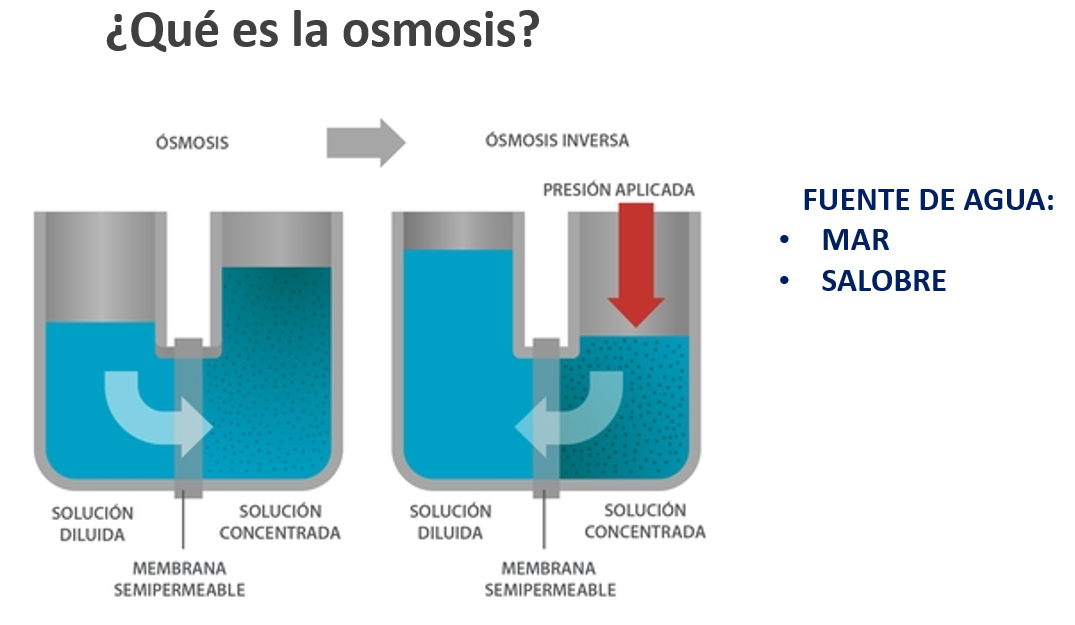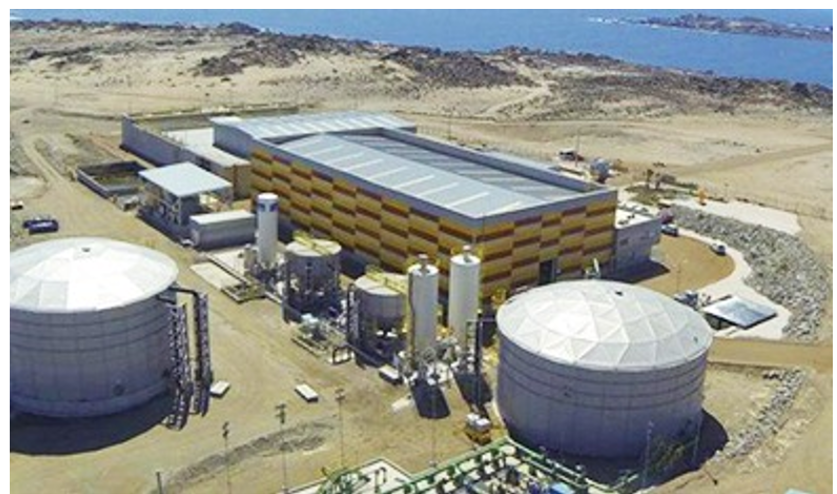
Chile: desalination as an alternative for new water sources
Chile is a country with more than 6,000 kilometers of coast, so the desalination of sea or brackish water has been presented as an option for agriculture, although there are also other alternatives such as the recovery and reuse of wastewater.
Do you know what reverse osmosis is? At portalfruticola.com we tell you how this solution works to get better quality water.
During the Agricultural Water Summit, national and international experts addressed the problem of water use, and the general manager of Agroriego Tattersall, German Wielandt, professional with a long history in the implementation of irrigation projects, water treatment systems, management projects, automation and control of water resources, gave his vision in this regard.
Wielandt explained the challenges of reverse osmosis. It is used to desalinate seawater and brackish water, soften water, remove organic matter and separate from specific water contaminants. In Chile, in the city of Antofagasta for example, 85% of the population is supplied with desalinated water and 100% in Mejillones. In this case it is for human use, but for agriculture it is also a potential source to deliver water to crops.
Currently, Chilean and Peruvian companies (Ica, Piura, Olmos) are irrigating with this method, which is used and applied for avocados, blueberries, citrus fruits, grapes and in nutritional applications as phytosanitary.
Faced with the question whether agriculture can be carried out from seawater, Wielandt said that technically yes, commercially will depend on the type of investment for this the ideal is to have public investment-private, within the analysis you should also consider the type of crop you want to have.

As for energy, it adds that a local supply capacity is required, additional to irrigation of 10 Hp / (l/s) per hectare. Both environmentally and administratively, there must be many permits and political wills or decisions are fundamental.
A relevant scope explained by Wielandt is that most of the Chilean coastal rim is concessioned, through maritime concessions which are controlled and supervised by the Ministry of National Defense, and installing a plant requires one of those concessions.
Success stories
Among the success stories pointed out by the general manager of Agroriego Tattersall, is Berrymex, in San Quentin, Baja California.
There are also other experiences in Torre Vieja, Alicante, Spain, for 2,800 L/S. which is a desalination plant that provides drinking water and irrigation for the local community. In Chile, Aguas CAP stands out, in Copiapó, Chile, with a capacity of 600 l/s, 2021 produced 8 million m3 of water, 38% for industrial purposes, 32% for human consumption and 30% for irrigation.

When and why use reverse osmosis?
The main purpose, in the case of agriculture, is to ensure the establishment and development of the garden, since high concentrations of salts and chlorides produce: modification of the soil structure, decrease in the uptake of water and nutrients, Foliar damage, weakening of the tree, decrease in production and non-viability of crop growth.
It also has other benefits such as improving the efficiency of phytosanitary and nutritional applications, that is, a better dilution capacity is obtained, reduction of kilos/liters per hectare, there is greater absorption, and finally, can contribute to providing water for the consumption of workers in the field.
Wielandt took as a success case the one developed in Quilhuica Farms, Chile, who have managed to improve productivity of the production of avocados in weight-gauge, of the product (pulp-post-harvest), and the reduction of the risk of diseases.
Within the considerations that a company must have to install a desalination plant, it is necessary: have clarity on the surface that is held and the type of crop to irrigate, the demand for irrigation (m3/day and m3/ha/year), how many hours-days I want to irrigate, the quality requirements plus the identification and characterisation of the water source.
Wielandt points out that there is a preconceived idea that reverse osmosis can have a high cost, but points out that the benefits are much greater with good quality water and generate real productive increases. It adds that there is a higher profitability per hectare, which is reflected not only in the kilos but also in the quality and calibre of the fruit.
«To do this we have to do it with country sense. These projects are developed with the political will to want to move forward,» he concluded.
SOURCE: PORTALFRUTICOLA.COM
